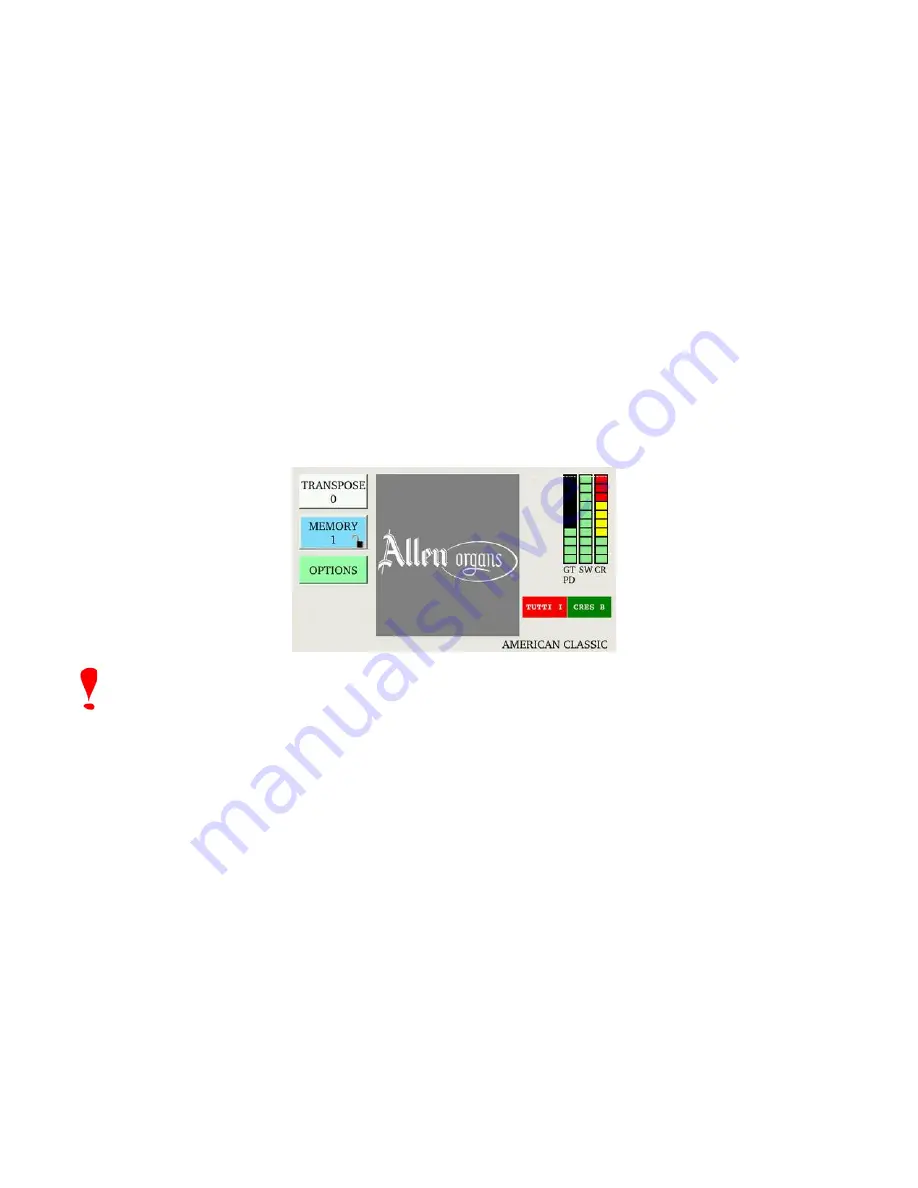
XVI. GENISYS™ DISPLAY REFERENCE GUIDE
INTRODUCTION
The GeniSys™ Display is an interface that controls many organ functions and a variety of MIDI
functions as well as many other functions. The GeniSys™ Display includes an LCD (liquid
crystal display) GUI (graphical user interface) touch screen that displays a variety of functions, at
any given time. The GeniSys™ operation software is vast. While the GeniSys™ Display
operation is simplistic, many of the features require more in-depth details. This guide will
attempt to explain those details.
A. BASIC OPERATION
1.
Start-Up Sequence
Turn on the organ's main power switch. The organ will take several seconds to start-up before
it is ready to be played. It is important that no keys, pedals or stop controls are pressed or
operated while the organ is starting up as this could cause errors to occur. During the start-up
sequence, the GeniSys™ Display will display the Allen Organ logo and also indicate the main
computer’s status. Once the organ has completed starting up, the GeniSys™ Display will
display the “home” screen indicating the organ is ready to play.
Important:
The Allen Organ includes several self-testing features. If a warning is displayed
within this sequence, please contact your Allen authorized representative immediately!
The
“Home”
screen displays the current Transposer setting, capture memory level (and lock
condition of the memory level), expression/crescendo positions, voicing suite, Tutti and
Crescendo B selections (if active) and the last piston/toe stud selection (if active).
To access a specific function, simply touch a button or area of the screen. For example, to
change the Transposer setting, touch the Transposer button and GeniSys™ Display will enter
the Transposer control screen. To return to the
“Home”
screen, touch the HOME button.
Most of the function screens contain two navigation buttons; BACK and HOME. The BACK
button will move the screen back to the previous screen/function/menu while the HOME
button will return the display to the
“Home”
screen.
15






























